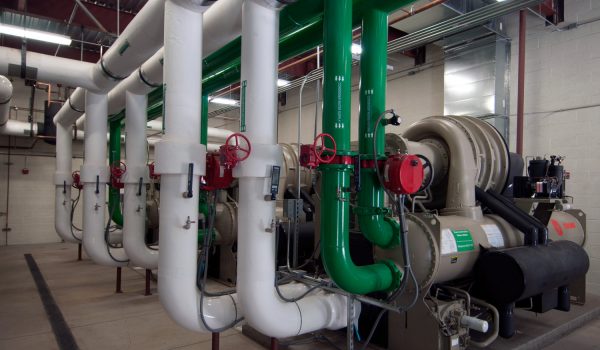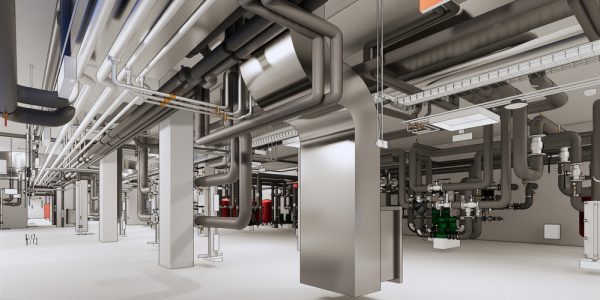As urbanization continues to rise and climate change impacts intensify, cities around the world are seeking innovative solutions to make

Electrical frameworks for electrical systems design, the plan boundaries are set as per the National Electric Code (NEC). These are the base necessities that should be met.
The significant classes of the electrical framework are supply, conveyance, engine loads, and lighting.
The vital components of an electric power framework are the creating stations, the transmission lines, the substations, and the conveyance organizations. The generators produce the power, the transmission lines move it to areas where it is burned-through, and the substations change it for modern, business, and private use for electrical system design.
The most widely recognized type of energy utilized in structures is exchanging (AC) current. Direct Current (DC) is utilized for certain sorts of lift engines and low voltage applications like sign frameworks and controls.
Power in structures is provided either as a single-stage or three-stage AC framework. Single Phase Power
Single-stage power comprises voltage and current that changes at a similar recurrence. This kind of dissemination is most normal when the power load is essentially utilized for lighting, low power machines, warming, and low torque engines (under 5HP).
In the U.S., single-stage voltage is 120 Volts, while a few different nations utilize 230 Volts as the norm.
A run-of-the-mill single-stage power framework contains three wires, a power wire, a nonpartisan wire, and an earth/ground wire.
Three Phase power alludes to three-wire Alternating Current (AC) power circuits, which are synchronized to switch bearing at various occasions however all at a similar voltage. Contrasted with single-stage power circuits, 3-stage power circuits give 1.732 (the square foundation of 3) times more power with a similar current for electrical system design.
A three-stage framework comes in three power wires, an impartial wire, and an earth/ground wire that is regularly discretionary.
For the three stages, power can be drawn either by the delta design or by the wye arrangement. A delta design produces 208V and the wye arrangement produces 120V (displayed previously).
This sort of adaptability assists balance with controlling for various hardware in a foundation. Low power loads (lights, PCs, and so on) are controlled utilizing any 120V single-stage power circuit and high-power loads (Water Heaters, AC Compressors) are fueled utilizing the 208V three-stage power circuit.

Commercial and Industrial structures ordinarily utilize single or 3-stage frameworks.
• 3-stage power is comparable to three associated single-stage frameworks.
• Utility organizations produce just 3-stage power.
Single-stage yield can be gotten from 3-stage input, yet not the opposite. Benefits of 3-stage power
Three-stage power circulation requires less copper or aluminum for moving a similar measure of force when contrasted with single-stage power. Something like 75% as much copper wire is needed for dispersing three-stage power as is needed for circulating a similar measure of single-stage power.
Bigger business and Industrial clients require higher voltage (commonly 480/277 volts). For this situation, the proprietor of the property gives and keeps up with their progression down the transformer.
Downstream the transformer is the switchgear. Its capacities to appropriate power securely and effectively to the different burdens all through the structure. The switchgear incorporates various circuit breakers, which upsets the power supply in case of an issue or issue.
It can likewise be set off physically to permit professionals to chip away at explicit parts of the power framework.

A circuit is a current conveying way between at least two focuses.
Circuits can be hindered by a switch. An electrical switch is a gadget that interferes with the way when important to secure different gadgets joined to the circuit, for instance, in the event of a powerful flood.
Circuits can be named:
• High Voltage Circuits = >1,000 V A/C power or > 1,500 V D/C power. Utilized in electrical power conveyance.
• Low Voltage Circuits = 50 – 1,000 V A/C power or 120 – 1,500 V D/C power. • Extra Low Voltage Circuits = < 50 V A/C power or <120 V D/C power. Additional low voltage is okay and utilized for things like radios, remote lighting, doorbells, HVAC.
An electrical burden is that thing of a circuit, which devours electric power. The models are the apparatuses, lights, cooling gear, siphons, and so on The term may likewise allude to the power devoured by a circuit. This is against a power source, like a battery or generator, which produces power.
A transmitter is a material ordinarily copper wire through which current streams. The voltage (the expected contrast) makes the current stream.
The current conveying limit of a conductor relies upon the size, sort of protection around it, and encompassing temperature.
A feeder is a bunch of electrical channels, which reach out from the wellspring of energy to an appropriation community for electrical system design.
Burdens ought to be under 66% of appraised conductor load rating to take into consideration development.
The size of conduits depends on the cross-sectional region indicated in the American Wire Gauge (AWG) and thousand roundabout mil (MCM) assignments. Expanding measure numbers give diminishing wire breadths. For instance:
● No. 36 AWG = 0.005 inches;
● No. 0000 AWG (otherwise known as 4/0 articulate “four nothing”) = 0.46 inches;
● Larger than 4/0 is MCM link sizes of 250, 400, and 500
About Author
InnoDez